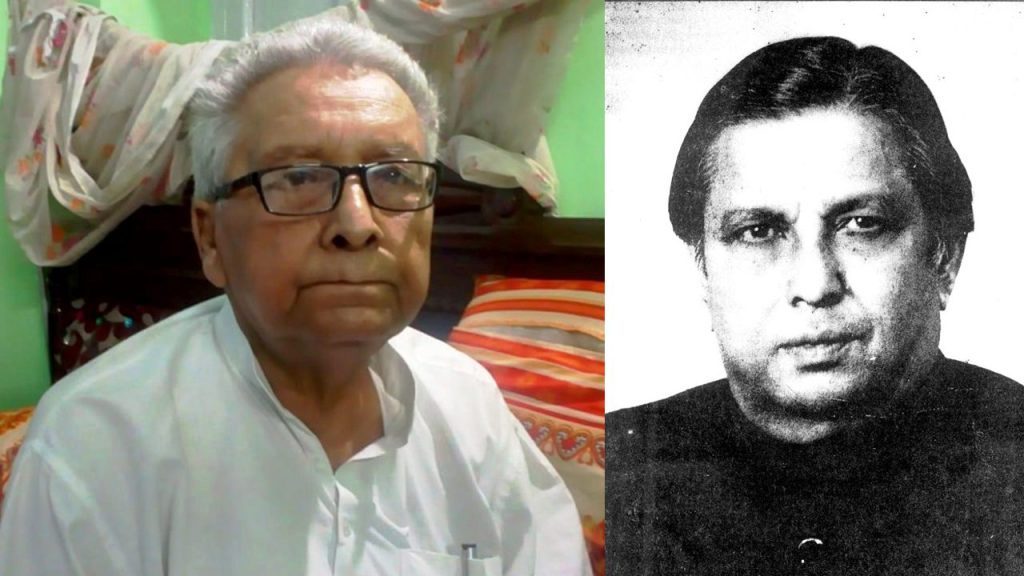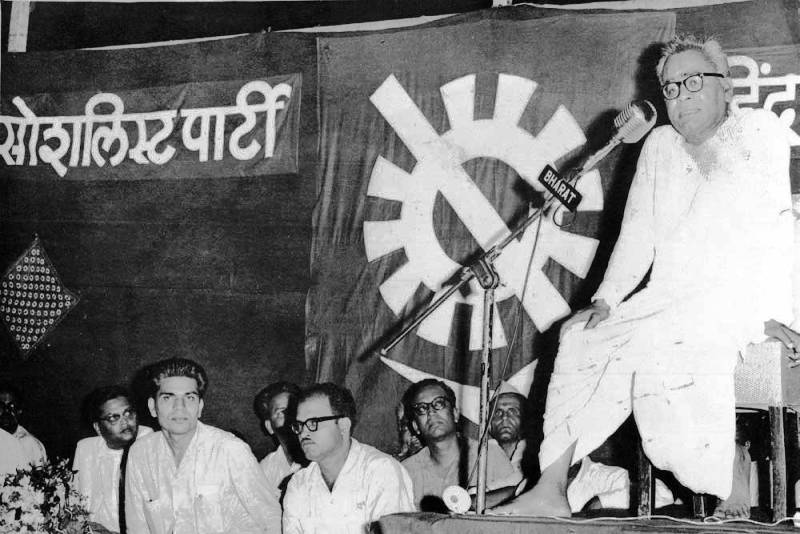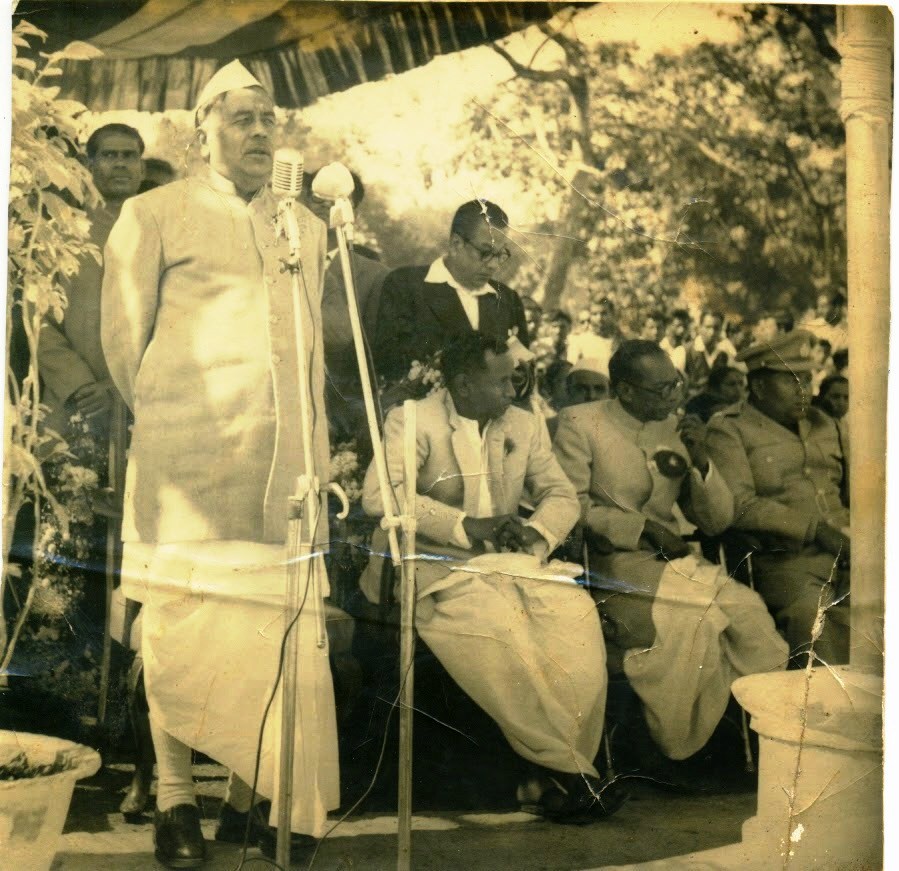Bindeshwari Prasad Mandal (25 August 1918-13 April 1918)
In 1967, the Congress was in unfamiliar territory. It faced a tough challenge in the Lok Sabha and Assembly elections. It was still in power at the Centre but had lost states to other parties. Bihar got a non-Congress government for the first time. An alliance of Jan Kranti Dal (JKD) and Samyukta Socialist Party (SSP) formed the government with Mahamaya Prasad Sinha at the helm. It was known as the United Front government. Sinha had defeated K.B. Sahay in Patna assembly constituency.
Sinha assumed charge on 5 March 1967. His party had 24 MLAs while SSP had 68. The politics of the Backwards was becoming vocal following the decline of the Congress. It also had an impact on the United Front government. The government had three SSP ministers but they should not have been ministers according to their party’s constitution. One of them was B.P. Mandal, who became a minister even though he was a Member of Parliament. Ramanand Tiwari had become minister while still being the president of the Bihar chapter of SSP. Bhola Singh was a minister despite being an MLC.

Lohia had opposed ministership of B.P. Mandal
Satish Prasad Singh says that according to SSP’s constitution, an MP could not become a minister in a state government. Similarly, the state president of the party and MLCs couldn’t become ministers. Meanwhile, in the meetings of the United Front MLAs there were dissenting voices against Sinha. Satish Prasad Singh, who was elected for the first time from Parbatta constituency, was leading the dissenters. ‘I pointed out that the leader of 24 MLAs is the chief minister and the leader of 68 MLAs is deputy chief minister!’ Singh says. SSP’s Karpoori Thakur was the deputy chief minister at the time. Ramanand Tiwari and Karpoori Thakur opposed Satish Prasad Singh’s stand. Yet, Singh went to Delhi to meet Lohia. By then, Lohia had also issued a statement against B.P. Mandal being made a minister. Singh took issue with Lohia’s apparent partiality. All three had gone against the party’s constitution, yet Lohia was singling out Mandal. Meanwhile, even after six months of being a minister, B.P. Mandal wasn’t an MLA or an MLC, so he had to resign.

The role of K.B. Sahay
The Congress took advantage of the dissent and unrest in SSP and began fanning it. Congress’ former chief minister, Krishna Ballabh Sahay, told Satish Prasad Singh that if he could muster the support of 36 MLAs, Congress would do the rest and he could form the government. Then K.B. Sahay himself exposed an attempt by Singh to gather support. Singh convened a meeting of 25 MLAs and K.B. Sahay leaked the news to Navrashtra listing the names of all the 25 MLAs. In the meantime, the Congress leadership came up with an arrangement for the Backward Classes in which a Kushwaha would become chief minister and he would nominate B.P. Mandal as an MLC. B.P. Mandal would then take over the reins and Bhola Singh would succeed him. The matter of appeasing the Triveni Sangh (trinity of castes – Kurmi, Kushwaha and Yadav) came to the fore. But it was not clear who among the Kushwahas would be the chief minister.

Satish Prasad Singh recalled that he was taking a walk on 28 January 1968 when Mahesh Prasad Singh and Ram Lakhan Singh Yadav, Congress leaders in the assembly, met him. They asked him to accompany them. But they didn’t reveal to him where they were going. They took him to Raj Bhavan and submitted a letter of support to the governor. The governor scheduled the oath-taking ceremony at 7 pm the same day. Later that day, only two ministers, Shatrumardan Shahi and N.E. Horo, apart from Satish Prasad Singh, were administered the oath. K.B. Sahay, M.P. Singh and Ramlakhan Singh Yadav, the three main Congress leaders, were confident that following the nomination of B.P. Mandal as MLC, Singh would tender his resignation. In the meantime, Parmanand Sahay, a close confidant of K.B. Sahay, resigned from Legislative Council and the Cabinet of Satish Prasad Singh recommended the nomination of B.P. Mandal, who was later administered the oath.
When B.P. Mandal’s faith was shaken
Satish Prasad Singh recalls that that when the governor was returning from Gandhi Ghat after paying homage to Gandhiji on 30 January 1968, near BN College, some students pelted stones at his vehicle, breaking the windshield. Following this incident, both Satish Prasad Singh and the would-be chief minister, B.P. Mandal, were at the Governor’s residence. An angry Mandal asked the chief secretary to have the students arrested. Satish Prasad Singh did the opposite, ordering the Chief Secretary to refrain from arresting the students. That is when B.P. Mandal grew suspicious of Singh’s intent and felt that he might not resign.
B.P. Mandal visited Ramlakhan Singh Yadav and M.P. Singh in their homes the same day and narrated the incident to them and shared his apprehension. Both the Congress leaders reassured him that Singh would resign.
Then as a hurt Satish Prasad Singh was preparing to tender his resignation M.P. Singh dissuaded him. Then came the reconciliation. B.P. Mandal also joined them. Satish Prasad Singh explained: If the arrest of the students had led to a bigger agitation wouldn’t the government be held responsible? Would Mandal have been in a position to take oath in that situation? Thus the matter was resolved. The next day, Satish Prasad Singh tendered his resignation to the Governor. Thus, the Mandal government came to be with the support of Congress. There was dissent within the SSP against this government too. The Mandal government lasted barely a month.
But this one month at the helm prepared the ground for B.P. Mandal to become the chairman of the Mandal Commission; it is against this background that he provided that impetus to the politics of the Backwards that led to a new intellectual movement and steered Indian society on to a path of reform.
We were like brothers
Satish Prasad Singh says Mandal and he were like brothers. He recalls Mandal being extremely honest and miserly, and committed to the welfare of the common man – “he spent his entire life serving the people”. Satish Prasad Singh happened to be the first chief minister from the Backward classes, following which there was one chief minister after another from the Backward classes. Dr Lohia’s deft strategy and the increasing political awareness played a big role in the politics changing course.
Translation: Parmanand Baiga; copy-editing: Anil
Forward Press also publishes books on Bahujan issues. Forward Press Books sheds light on the widespread problems as well as the finer aspects of Bahujan (Dalit, OBC, Adivasi, Nomadic, Pasmanda) society, culture, literature and politics. Contact us for a list of FP Books’ titles and to order. Mobile: +917827427311, Email: info@forwardmagazine.in)
The titles from Forward Press Books are also available on Kindle and these e-books cost less than their print versions. Browse and buy:
The Case for Bahujan Literature
Dalit Panthers: An Authoritative History







